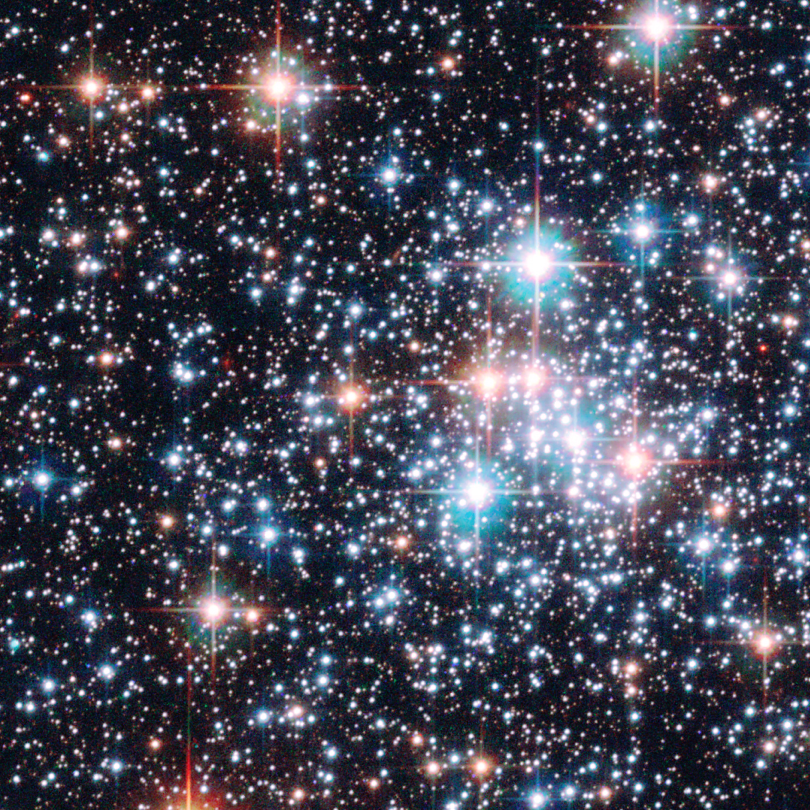To better understand this series, we start by saying that the brightest and hottest stars are of type EITHER, then follow the b and end up with the weakest and coldest kind M. Each letter is subdivided from 0 to 10 for intermediate luminosity and temperature values (e.g. O2, G4, K7). According to this, a star with very high light intensity can be called O9, while one with very low intensity would be M0. In this classification, our Sun is located on the main sequence as a G2 star, with a surface temperature of 5,500 ºC. It is worth mentioning that recently, this series of letters has been extended to cover stars with different spectral types, and technically the official sequence is currently WOBAFGKMLT and RNCS. Characteristics of each type are detailed below:
- Type O. They are one of the hottest and brightest stars, with a strong blue color and large size. The main radiation they emit is in the ultraviolet (UV) range.
- Type B. They are very bright, with a weaker blue coloration; Like type O, they consume their energy in a short time and usually occur in groups of several associated stars.
- Type A. They are one of the most common stars observable, white in color; For example, here is the brightest star from Earth, Sirius.
- Type F. They are large and bright stars, still whitish but more yellowish in color; Here is, for example, the star Fomalhaut in Piscis Austrinus.
- Type G. They are very well-known stars, since our Sun belongs to this category; Their color is yellow, and they are already smaller in size (in the main sequence they are considered dwarf).
- Type K. They are stars colder than our Sun, presenting an orange color; In the main sequence they are also dwarf stars, but outside of it there are giants and supergiants.
- Type M. They are the most common stars that exist; They are cold and small, all the red dwarfs are located here; Outside the main sequence, there are also giants and supergiants.
Recent spectral types
- Type W. They are very bright stars (~70,000 ºK), also called Wolf-Rayet stars. They are thought to be supergiants towards the end of their life, with a helium-rich core.
- Type L. They are stars without sufficient mass to initiate thermonuclear reactions, below the M range. They have between 1,500~2,000 ºK and correspond to types of red dwarfs.
- Type T. They are young and low-mass stars, possibly in a state of full formation, since they can have temperatures between 600-1,000 ºK
- Type C. They are red giant stars whose main composition is carbon. These are subdivided into types R, N and S.


